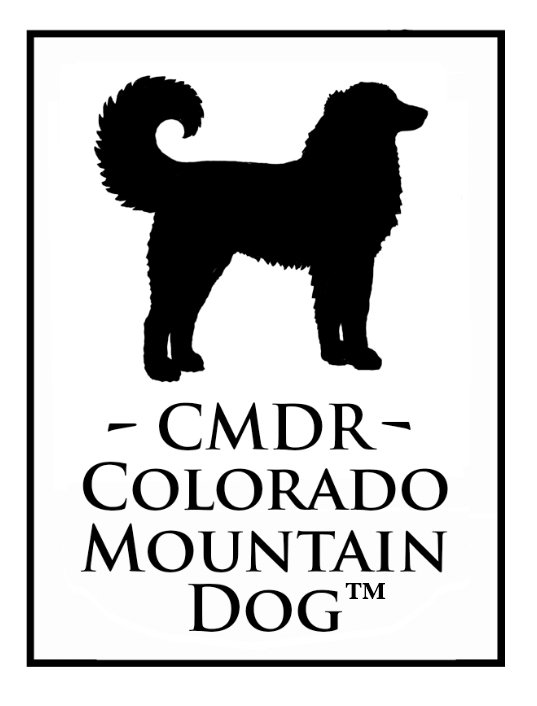~ Articles ~
Colorado Mountain Dog G Standings
The “G” (generational) structure is intended to maximize the population efficiency of every dog, and to hold off inbreeding in the breed for as long as possible. After purebred status is achieved, there is still the need to use the trial mating tool in the database to calculate breeding coefficient, to hold off inbreeding.
We use the letter G for “Generation”, where many organizations use F, but it doesn’t matter -- how the generational standings work is what matters. The format we use is international, not a product of the CMDR.
All puppies are one generation higher than their lowest parent. In a developing breed, it is important to cross with equal generational standings, to maximize a dogs genetic impact in the breed, so that it takes the minimum number of dogs to reach purebred, and so that many dogs are not wasted.
FD, (Foundation Dog)
Foundation dogs may be purebreds or crosses. No purebred dog of another breed may be anything but a foundation. In other words, if we register two purebred Boz dogs, we may not cross them and register offspring as G1. If we cross a Boz with a Pyr, for instance, we may register the offspring as G1. It is crucial to record all the foundation dogs used in a breed so that the breed percentages can always be traced back to the origins of the breed.
G1 (Foundation plus one generation). A G1 (F1) results in the cross of two foundations, or of a foundation bred to any other generation.
G2 (Foundation plus 2 generations). A G2 is a 3rd generation cross, FD plus two.
G3 (Foundation plus 3 generations). A G3 is a 4th generation cross, FD plus three.
G4 (Foundation plus 4 generations) A G4 is a 5th generation cross, FD plus four. G4s can be bred to G4s, or G5 Purebreds to produce purebreds.
G5/PB (Foundation plus 5 generations -- Purebred). A G5 is a purebred Colorado Mountain Dog. It takes a full six generations to produce a purebred. G5s may be bred to G4s or purebreds of any higher generation of purebred CMDs to produce purebreds. But a true purebred is not just the result of G standing… it should also be the result of years of careful trait selection.
It is important to maximize your genetics, and the genetics of the breed, by making equal G standing pairings whenever possible. Do you have two great dogs, one a G1, and one a G2? Breed the G1 to the best G1 mate possible, and then pair a G2 offspring with your G2.
If you lay out pedigrees it will become immediately obvious why this is important. The hardest thing to do in a developing breed is to keep the genetics diverse. If lower G standings are crossed with higher ones, the breed as a whole doesn’t advance. If you take a new line G1 to a more common G3, then you cannot use your G3 line again for your new line offspring. Others who have the G3 lines cannot add your innovated genetics because they are related from the other side. Genetic bottlenecks happen fast.
G standings are a nuisance, until they aren’t. This protocol gets a program, and the breed as a whole, into the G5 level (purebreds) as fast as possible, and then, when a large genetic pool has been created, they are all called PBs, or purebreds. More honing can be done without G standing considerations.
